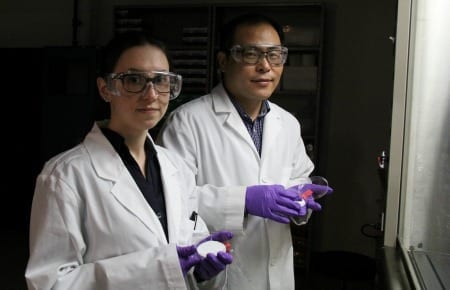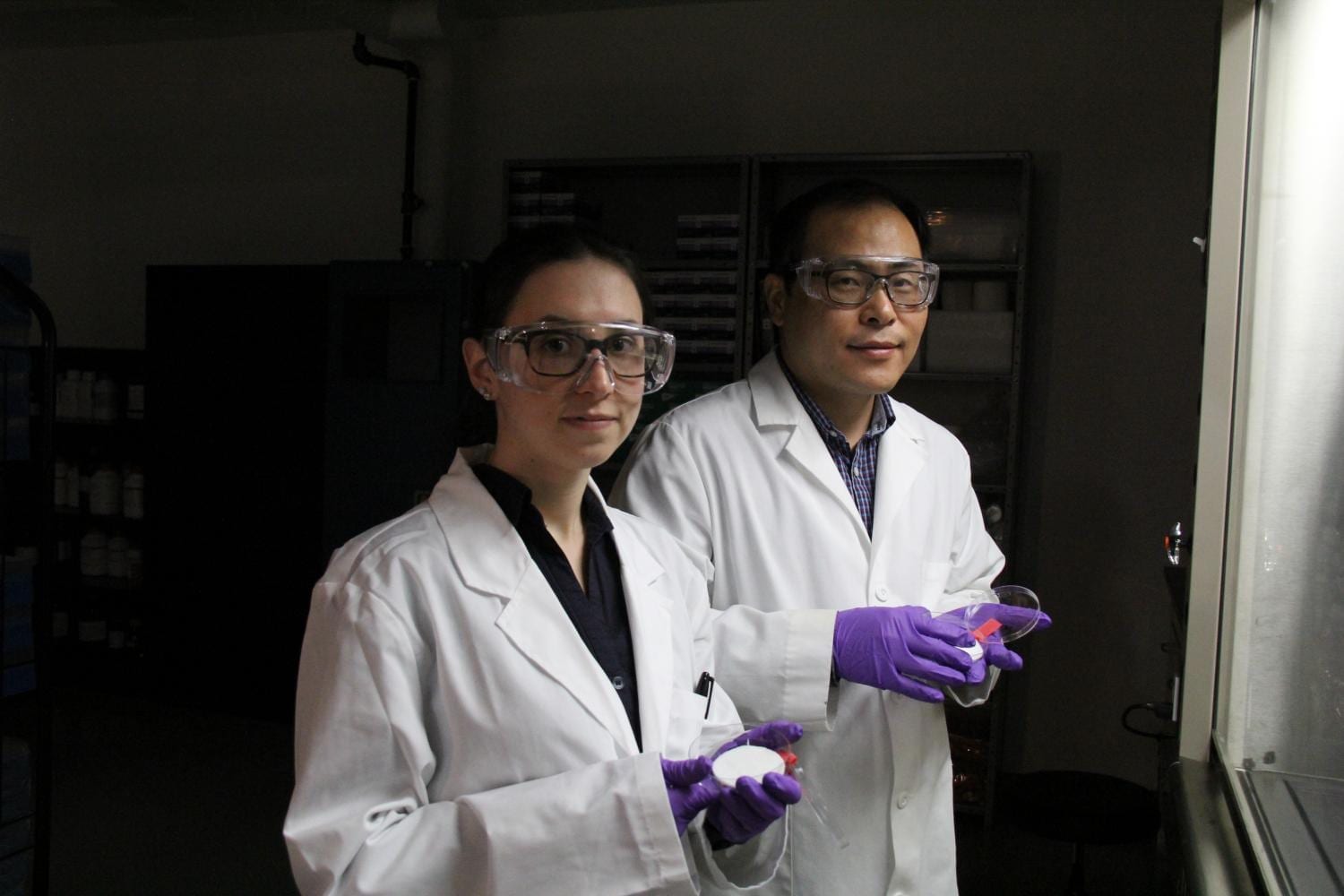
“Surgical masks were originally designed to protect the wearer from infectious droplets in clinical settings, but it doesn’t help much to prevent the spread of respiratory diseases such as SARS or MERS or influenza,” says Choi.
Airborne pathogens like influenza are transmitted in aerosol droplets when we cough or sneeze. The masks may well trap the virus-laden droplets but the virus is still infectious on the mask. Merely handling the mask opens up new avenues for infection. Even respirators designed to protect individuals from viral aerosols have the same shortcoming—viruses trapped in respirators still pose risks for infection and transmission.
Masks capable of killing viruses would save lives, especially in an epidemic or pandemic situation. During the 2014-2015 season nearly 8,000 Canadians were hospitalized with the flu. That same year, deaths related to influenza in Canada reached an all-time high of nearly 600.
Knowing that the masks are inexpensive and commonly used, Choi and his research team went about exploring ways to improve the mask’s filter. And this is where a problem he is struggling with in one field of research—the development of oral vaccines like a pill or a lozenge—became a solution in another area.
A major hurdle in the development of oral vaccines is that when liquid solutions dry, crystals form and destroy the virus used in vaccines, rendering the treatment useless. In a nifty bit of engineering judo, Choi flipped the problem on its head and turned crystallization into a bug buster, using it as a tool to kill active viruses.
Choi and his team developed a salt formulation and applied it to the filters, in the hope that salt crystals would “deactivate” the influenza virus.
The mechanics of simple chemistry make the treatment work. When an aerosol droplet carrying the influenza virus contacts the treated filter, the droplet absorbs salt on the filter. The virus is exposed to continually increasing concentrations of salt. As the droplet evaporates, the virus suffers fatal physical damage when the salt returns to its crystalized state.
While developing solid vaccines, Choi observed that sugar used for stabilizing the vaccine during the drying process crystalizes as it dries out. When crystals form, sharp edges and spikes take shape and they physically destroy the virus vaccine.
“We realized that we could use that to our advantage to improve surgical masks,” said Choi.
In a series of experiments and tests at the University of Alberta and in the Department of Medical Zoology at the Kyung Hee University School of Medicine in Seoul, South Korea, the team arrived at a perfect treatment that improves the efficacy of the fibre filter inside the masks.
By using a safe substance (table salt) to improve an existing, approved product, Choi sees very few roadblocks to implementing the innovation.
Learn more: Researcher turns “SARS mask” into a virus killer
[osd_subscribe categories=’viruses’ placeholder=’Email Address’ button_text=’Subscribe Now for any new posts on the topic “VIRUSES”‘]
Receive an email update when we add a new VIRUSES article.
The Latest on: Killing viruses
[google_news title=”” keyword=”killing viruses” num_posts=”10″ blurb_length=”0″ show_thumb=”left”]
via Google News
The Latest on: Killing viruses
- Spain virus kills 'four in 10' and symptoms are 'headaches and mood swings'on May 8, 2024 at 1:52 pm
Britons in Spain have been issued a warning about a deadly virus that kills "40 per cent" of victims as Crimean Congo haemorrhagic fever is recorded in the European Union holiday hotspot.
- Brit tourist warning after horrific Ebola-like virus confirmed in Paris holiday hotspoton May 8, 2024 at 1:52 pm
A soldier in Paris has been diagnosed with Lassa fever upon returning to Paris, France from abroad - it comes as Nigeria is dealing with its worst outbreak of the fever, which can be deadly ...
- Britons in Spain issued warning about deadly virus that kills '40% of victims' - full list of symptomson May 8, 2024 at 1:19 pm
Britons in Spain have been warned about a deadly virus that kills 40 per cent of those who contract it.The alert follows the hospitalisation of a man diagnosed with Crimean-Congo ...
- Oncolytic Viruses: A Promising New Option in Cancer Treatmenton May 8, 2024 at 7:59 am
As part of its Speaking Out video series, Targeted Oncology spoke with Howard D. Edington, MD, about the benefits of using oncolytic viruses in cancer treatment.
- Deadly virus that kills third of patients surges through Europe with warning issuedon May 8, 2024 at 4:36 am
Holidaymakers have been warned to be on high alert after a severe illness, which kills around a third of people infected, has been detected in Spain.
- Foreign Office warning as deadly virus that kills third of patients surges through Europeon May 8, 2024 at 1:02 am
British holidaymakers have been warned to be on high alert after a severe illness, which kills around a third of people infected, has been detected in Spain. The Foreign Office-backed Travel Health ...
- U.S. Tightens Rules on Risky Virus Researchon May 7, 2024 at 1:16 pm
A long-awaited new policy broadens the type of regulated viruses, bacteria, fungi and toxins, including those that could threaten crops and livestock.
- NJ stats: COVID still killing people weeklyon May 6, 2024 at 4:41 pm
The stranglehold of the pandemic has faded, but the presence of the virus that caused it is still very present in the Garden State.
- What to know about bird flu: Virus confirmed in dairy cows; human infections rare but possibleon May 5, 2024 at 9:35 pm
By Amy Maxmen KFF Health News Headlines are flying after the U.S. Department of Agriculture confirmed that the H5N1 bird flu virus has infected dairy cows around the country. Tests have detected the ...
via Bing News











